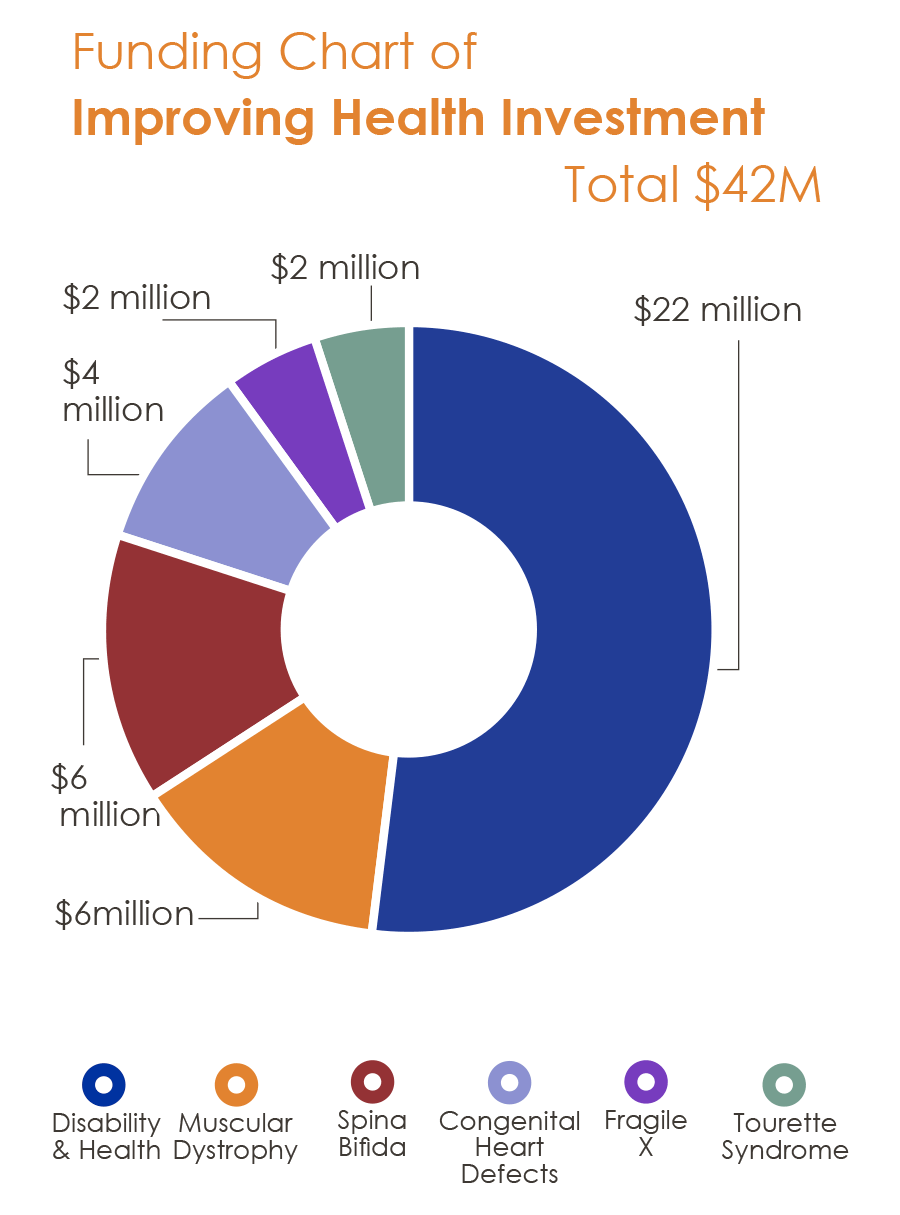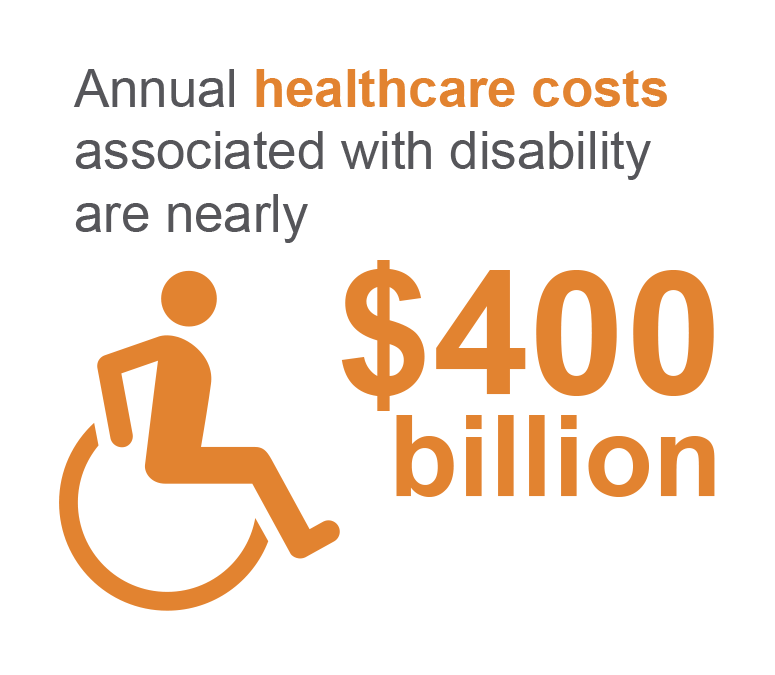Improving Health

Up to 57 million people
are living with a disability in the U.S. today.
Disabilities may include difficulty with movement, hearing, seeing, communicating or concentrating, remembering, or making decisions. CDC’s National Center on Birth Defects and Developmental Disabilities (NCBDDD) works to ensure that people of all different abilities are able to live their lives to the fullest.

How NCBDDD makes a difference
Autism Spectrum Disorder (ASD)
With our research and tracking, healthcare organizations, schools, public health agencies, policymakers, and others make decisions based on medical and research evidence to help the 1 in 68 children living with autism.
Disability and Health
1 in 5 Americans have a disability and they are more likely than people without disabilities to be obese, smoke cigarettes, have high blood pressure, and be physically inactive. NCBDDD improves their health through two national and 19 state-based programs.
Muscular Dystrophy (MD)
NCBDDD improves the care and quality of life for people living with muscular dystrophy by determining how many people have muscular dystrophy, what types of care they receive, and their outcomes based on their care.
Spina Bifida (SB)
1,500 babies are born with spina bifida (serious birth defects of the spine) every year in the United States. NCBDDD’s work guides quality care throughout the lifetime for people with spina bifida.
Congenital Heart Defects (CHD)
As medical care and treatment have improved, babies and children with CHDs are living longer and healthier lives. NCBDDD is at the cutting edge of research to understand health challenges these former “miracle babies” are facing as adults.
Fragile X Syndrome (FXS)
Fragile X syndrome is the most common cause of inherited intellectual disability (limited ability to learn at an expected level and function in daily life). NCBDDD’s work improves the lives of Americans living with fragile X syndrome by helping to understand challenges across the lifespan and how care and treatments affect outcomes.
Tourette Syndrome (TS)
NCBDDD improves the health of Americans living with Tourette syndrome by understanding how many people are affected and how to get them diagnosed and treated earlier.
2016 Successes
-
Providing Resources for Developmental Delays
The Physical Developmental Delays: What to look for tool was launched in response to research generated from NCBDDD’s Muscular Dystrophy Surveillance, Tracking, and Research Network (MD STARnet) and a three-year collaboration between NCBDDD and the American Academy of Pediatrics (AAP). Physical development is becoming able to perform activities that require the use of muscles, such as rolling over, sitting, walking, smiling, picking up a small object like a penny, and writing with a pencil. The tool is an interactive checklist that provides support to parents when they need to talk to their child’s doctor about physical development concerns. -
Busting Myths about Intellectual Disabilities
In collaboration with AAP, NCBDDD created Fragile X Myth Busters, which are handouts for families and pediatricians to address misperceptions that can contribute to a delayed or missed diagnosis of fragile X syndrome (FXS). This project helps pediatricians decrease the time between suspecting a developmental delay and getting the correct genetic test and a diagnosis of FXS. -
Preparing for Emergencies
The Emergency Preparedness: Including People with Disabilities resource is an online catalog of materials developed by NCBDDD-funded disability and health programs to support emergency preparedness and response activities for people with disabilities. The catalog includes materials for identifying the needs of people with disabilities; communication and training; and assessing emergency plans, shelters, and policies.


Priorities for the future
- Strengthen the evidence for successful public health programs that include and are tailored to the needs of people with disabilities. This will ultimately help reduce differences in health outcomes between people with and without disabilities.
- Ensure that healthcare providers have the most current scientific information to diagnose, care for, and treat their patients living with disabilities.
- Reduce medical complications for people living with select genetic (inherited) conditions and birth defects, including muscular dystrophy, spina bifida, and congenital heart defects.
- Address critical gaps in information about disabilities, such as how common they are, who is affected by them, what factors increase the risk for poor health outcomes, and how to improve the health outcomes for people living with disabilities.
- Page last reviewed: July 21, 2017
- Page last updated: July 21, 2017
- Content source:


 ShareCompartir
ShareCompartir